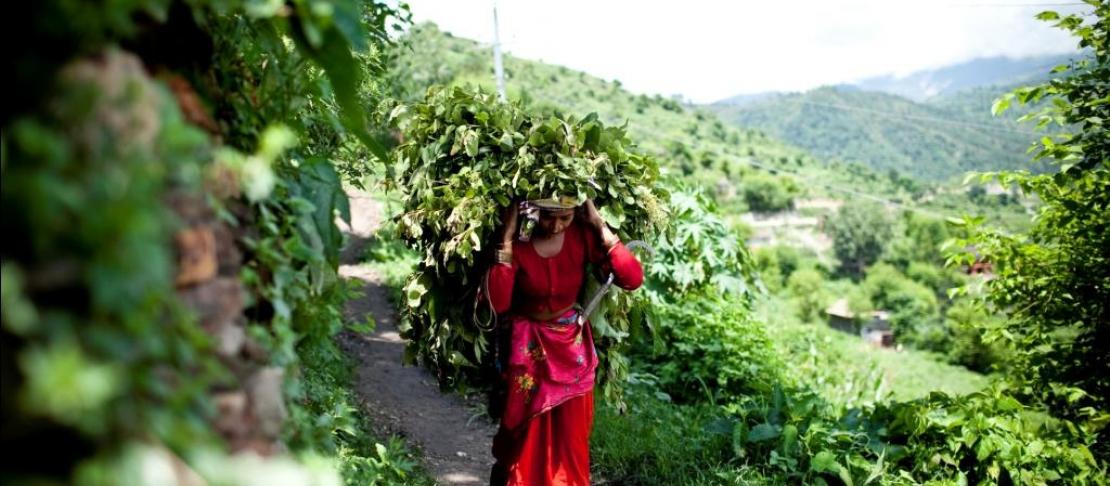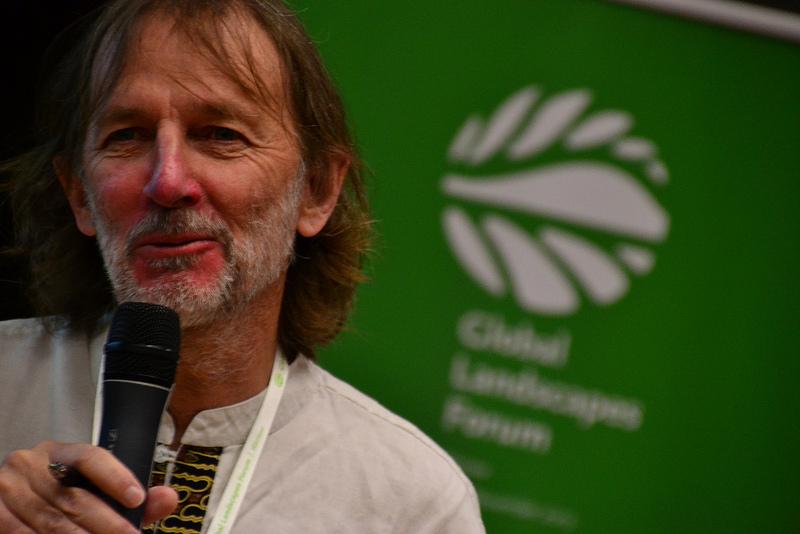Balancing food and environmental needs through the landscape approach

As human activities alter weather patterns, the consequences to livelihood systems locally and globally are increasingly worrisome. There is no denying that agriculture and animal husbandry are part of the problem. Yet we cannot respond to climate change by simply scaling down agricultural production, as hunger and poverty would follow.
On the contrary, eliminating the hunger that persists today, and rewarding people’s aspirations as they climb out of poverty, requires farmers from around the world to produce ever more agricultural goods. Farmers must redouble their efforts as demand grows in tandem with the global population, which is projected to rise from 7 million today to 9 or 10 billion by 2050.
No magic bullet can resolve this dilemma. However, the landscape approach provides a framework for multiple strategies to boost agricultural production while adapting agriculture to climate change and reining in agricultural emissions.
The landscapes approach looks beyond agriculture, integrating it with forestry and other land uses to forge a comprehensive agenda for sustainable development to eradicate poverty, strengthen food and nutrition security, and promote green growth that makes cities more energy efficient and rural land use more productive and sustainable.

The landscapes approach looks beyond agriculture, integrating it with forestry and other land-uses.
Two keys to successful landscape management from the agricultural perspective are intensification and diversification.
Agriculture shares responsibility for climate change not only by emitting GHGs but also by driving deforestation and diminishing the carbon sequestration that healthy forests provide. Only by producing more crop per hectare can farmers afford to spare surviving forests, wetlands and other natural landscapes. Further, improved productivity can induce farmers to stop tilling or overgrazing marginal lands that would be more valuable to livelihoods and resilience if reforested or otherwise restored to their natural state.
Higher emissions from intensified agriculture in selected favorable growing environments may be a good bargain if it is the unavoidable cost of leaving extensive landscapes under natural vegetation to serve as carbon sinks and wildlife preserves.
Sustainable agricultural intensification requires research investments to breed improved crop varieties, refine crop management techniques, and create enabling social and administrative environments for appropriate innovation. Research on governance frameworks and incentives for managing accountability of commodity supply chains and enforcement of illegal deforestation rules would ensure that the gains from intensification do not lead to further deforestation.
Diversification is the best hedge for any investment, not least against the extreme weather that already buffets some of the world’s most vulnerable farm communities. Yet crop diversification may not be practical, or possible, on the individual field. The landscape approach can therefore offer opportunities to help rural communities diversify at the ‘landscape scale’.
Agroforestry, integrated livestock management, conservation tillage, crop residue and nutrient recycling, and minimizing the use of nitrogen fertilizer are among the climate-smart agricultural practices with potential for scaling up. In the resulting climate-smart landscape, fields, forests, grasslands and other land uses are coordinated at the landscape scale to help achieve social, economic and ecological ends.
Learn more about climate-smart farming: Climate-smart agriculture is improving the lives of millions - here's how
Governance is crucial to landscape management. It requires the participation of a range of stakeholders, from organizations of farmers, herders, fishers and foresters to civil servants responsible at the watershed level and beyond. To be efficient and effective, the landscape approach needs scientific inputs to inform governance.
To this end, the Global Landscapes Forum held this week-end, 16-17 November 2013 in Warsaw, Poland, aimed to shape the agenda on climate and development as it pertains to forests and agriculture.

Bruce Campbell at A Sub-plenary session dedicated to finding mitigation and adaptation synergies in the landscape, held during the Global Landscapes Forum.
The Forum aspired to develop the potential of the landscape approach to inform future agreements under the United Nations Framework Convention on Climate Change (UNFCCC), thereby helping to achieve the proposed Sustainable Development Goals.
Meanwhile, the CGIAR Research Program on Climate Change, Agriculture and Food Security (CCAFS) is developing and testing what it calls the SAMPLES approach — short for Standard Assessment of Mitigation Potential and Livelihoods in Smallholder Systems. The SAMPLES project, one of many under CCAFS, aims to establish a low-cost protocol to measure greenhouse gas emissions and identify mitigation options for smallholders that can be pursued at the farm and landscape scale without prejudicing food production or rural incomes.
Join a live-streamed seminar on the SAMPLES approach on 4 November 14:30-15:30 CET
As the landscape approach is both new and ambitious, its practitioners still discuss definitions, methods and goals.
Even the principle of “land sparing” by concentrating intensified agriculture on selected favorable environments is subject to debate. Advocates of “land sharing” argue instead for wildlife-friendly farms that coexist with ecosystems by resting lightly on the land and drawing few natural resources. Which approach to favor, or how to combine land sparing and land sharing, are only two of the fundamental questions that demand timely answers to determine where the landscape approach is headed.
Bruce Cambpell is the Director of the CGIAR Research Program on Climate Change, Agriculture and Food Security (CCAFS). The CCAFS team is reporting live from the UNFCCC climate talks in Warsaw, 11-22 November 2013. Click to read all of our coverage. For live updates from the Climate talks in Warsaw, follow us on twitter @cgiarclimate and @bcampbell_CGIAR. Join the conversation using #GLFCOP19.
